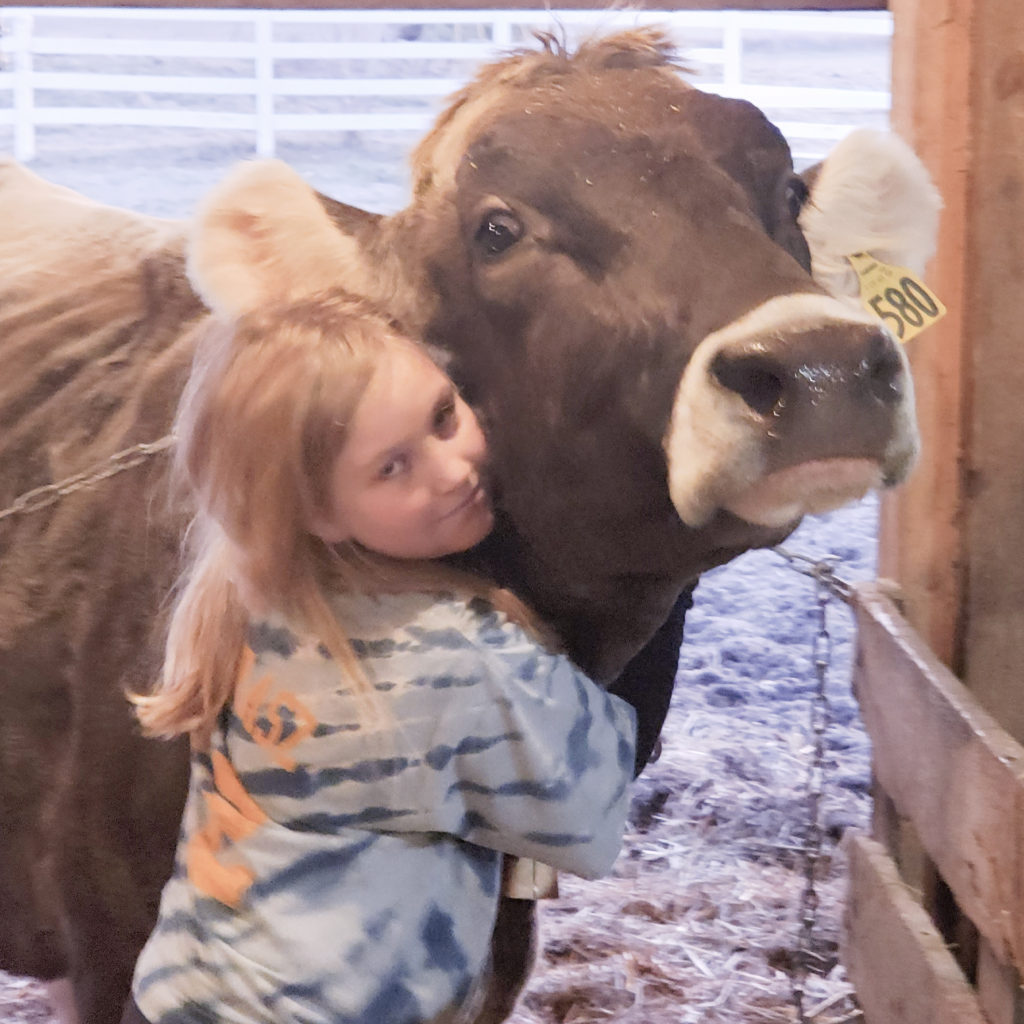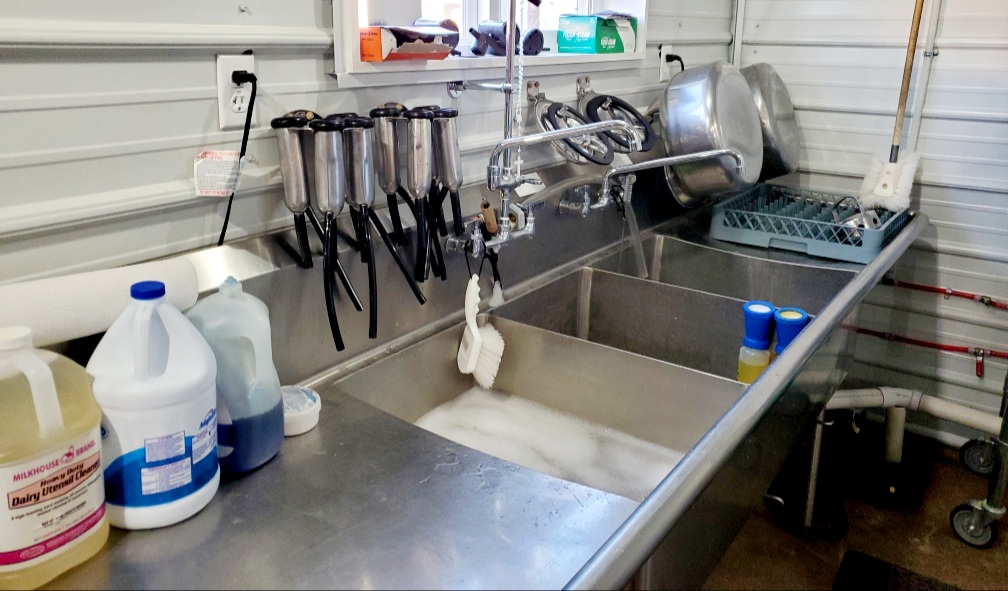Raw Milk vs. Pasteurized- What’s the big deal?
I’ve had this post brewing in the back of my mind for quite some time and decided today that it is time I put it to ‘paper.’ I received a huge thrust into action during a recent delivery visit to Ray’s Feed Mill in Norway.
As I knelt on the cold hardwood floor at the mill removing empty milk jars from our herd share refrigerator to replace them with full jars of beautiful white gold, a gent approached me and asked, ‘Is that raw milk?’ To which I replied that it was.
He proceeded to ask, ‘Isn’t that the stuff they say we shouldn’t drink?’ I could only assume that ‘they’ was the well-meaning folks in government and medicine who tend to believe that raw milk is wrought with unhealthy pathogens and dangerous bacteria.
I didn’t have time to educate the fellow in that moment because he was obviously in a hurry, and I had to sympathize with him because I myself was not enjoying temperatures near zero that day in the warehouse of the feed mill. All I could muster was, ‘That’s because they are silly!’
I do have time today however, so I’ll share what I’ve learned through being around raw milk dairy my entire life. When I was a child, my aunt and uncle operated a conventional dairy farm, my best friend in high school grew up on a dairy farm, and Andy’s family dairy has been in operation since 1915 (no small feat)! This was well before herd shares were even a ‘thing’ in my mind.
To begin, and to be fair, they are not wrong. That’s right, I mean they are not silly. Raw milk that is not intentionally produced to be consumed raw can be dangerous. It absolutely may contain tons of bad bacteria, and harmful pathogens. *shock* *awe* *gasp* How can I be saying this?
We’ve learned a lot about sanitation since then, and I will have you know, that I have consumed raw milk from our family and friends’ conventional dairies all of the years of my life, and I have never gotten sick from it. Current techniques and quality control practices on conventional farms today help to ensure that their milk is clean and safe, each batch is tested for bacteria, components, and absence of antibiotics, which creates standards and incentives for farmers to produce a superior product. (All milk containing antibiotics must be dumped.) Even though conventional farms adhere to these standards, in states like Michigan, they are required to send their milk for pasteurization and are paid barely enough to break even on their milk (they have no control over how much they can charge for their milk, about $1.40 per gallon at $16/hundred weight from the plant). Also, because their milk will be pasteurized, the standards are different than if it was going to be consumed raw.
I digress, what was I getting to…. oh yeah, raw milk intentionally produced for direct human consumption.
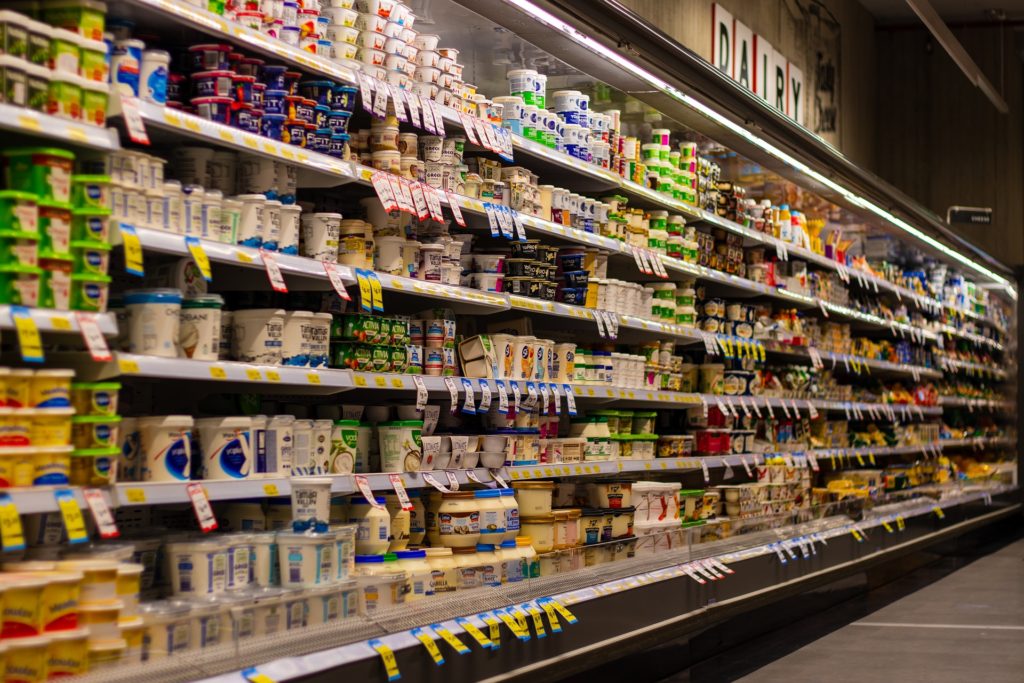
Today’s supermarket dairy section…
Now I’m going to tell you about how safe, healthy, raw milk is intentionally produced for direct human consumption.
When we decided to go down this herd share dairy road, we knew we wanted to produce A2A2, high quality, nutrient dense, clean, raw milk from heritage bred cows. We took much of what Andy has learned over his lifetime of work on his family’s dairy and we applied it to our raw dairy production. We also became involved with Weston A Price, the Farm to Consumer Legal Defense Fund and the Raw Milk Institute to learn all that we could about clean production of raw milk. I mentored with other herd share farmers too! We have no idea who will be consuming our milk when it leaves our facility so we need to make sure that it is as clean as it can be!
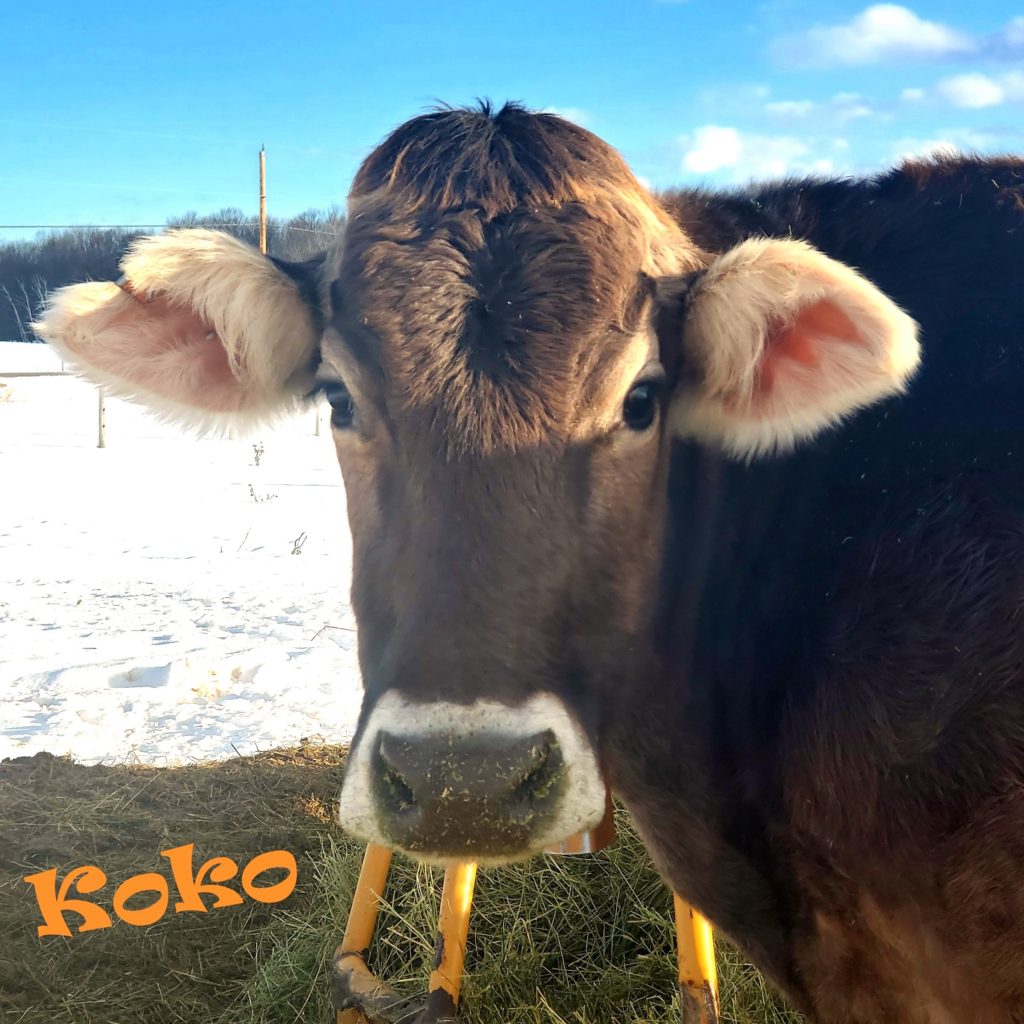
The first step in healthy, clean raw milk is to have healthy, clean cows. Cows that are TB, Brucellosis and Johne’s free. We raise heritage bred, registered and tested A2A2 Brown Swiss from superior bloodlines. They are provided adequate pasture and are rotationally grazed in the spring/summer/fall so that our pastures stay lush and green and free from parasites. We test our water for coliform bacteria annually so the water the cows drink and that we use to clean in our milk house is healthy. In the winter, bedding in shelters and barns is cleaned or changed often, and our cows are clean when they come into our milking area.
Udder care is priority too- every time our cows are milked we use a new single use towel on each cow to clean the udder thoroughly with warm water (the cows love this massage). That is followed by a gentle sanitizing peroxide-based pre-dip. Then a little milk is stripped from each teat and inspected for signs of mastitis. After milk inspection, the cows are allowed to ‘let down’ and their udders to dry for about a minute before the Surge bucket milker is attached. Our vacuum pressure is constantly monitored with a gauge to make sure the suction is gentle on their udders. We also use an iodine based post-dip to close the end of the teat from mastitis causing bacteria after milking is complete.
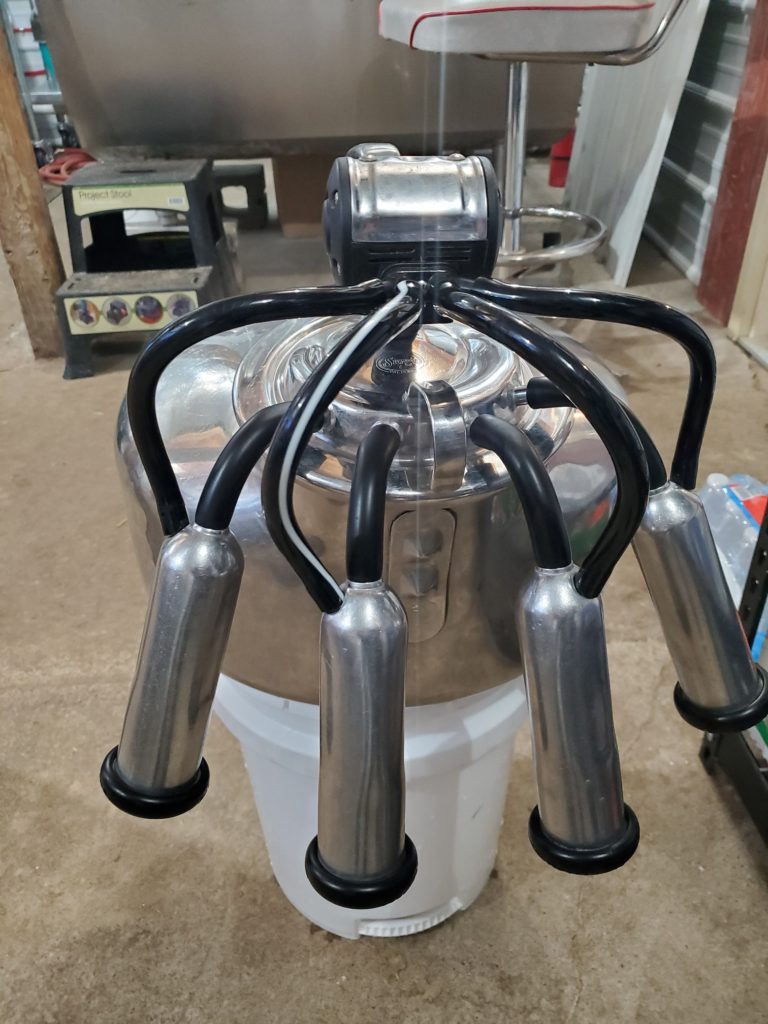
Our Surge bucket milkers are stainless steel and completely tore down and sanitized after each milking so it is ready for the next. Once full of milk, they are poured directly into a filter-funnel which empties directly into a cooling bulk tank. The milk is cooled to 34 degrees F within 10 minutes of being milked out. Our milk only comes into contact with sanitized stainless steel surfaces until bottling. Our bulk tank is cleaned and sanitized immediately before filling again, two to three times weekly after bottling. We also test our milk for bacteria and coliform monthly to ensure our processes are working effectively.
When we bottle the milk, all of our herd share jars are sanitized and filled immediately with gloved hands to ensure we don’t contaminate the final product. They are then delivered to refrigerators that are continuously temperature monitored.
It sounds like a lot, but in reality, all of these steps take minutes. Even with five cows in milk, our daily milking, with set-up and cleaning included, takes about 1.5 hrs. morning and night.
SO!
Is raw milk intentionally produced for direct human consumption safe? Yes. (and even legal to distribute in some states)
Is pasteurized milk from conventional dairy farms safe? Yes.
If they are both safe, why pay more and jump through some hoops for access to raw milk?
“The protective effects of raw cow’s milk on infections were comparable to those of breastfeeding, suggesting similar anti-infective properties of bovine and human milk…”
Loss et al. 2015
Here are some peer reviewed study findings that also show the benefits of raw milk consumption :
‘Significant and reproducible evidence from large multi-country cross-sectional and cohort studies for a protective effect of raw farm milk consumption in childhood against the development of asthma and allergic diseases.
Evidence from cross-sectional studies for a significant protective effect of raw farm milk consumption against rhinitis, respiratory tract infection, otitis and fever.
Consumption of raw farm milk is a major independent factor in the “farm effect” by which children exposed to farm environments have a lower incidence of asthma and allergic diseases than non-exposed children.
Protective effect against asthma and allergy is most pronounced when exposure to raw farm milk begins in utero, followed by consumption prior to one year of age.
Children fed boiled farm milk are more likely than controls to show signs of milk allergy at age 1, while consumption of raw farm milk is protective against developing milk allergy.
Childhood consumption of raw farm milk correlates with higher pulmonary function and lower incidence of allergic diseases in adults.
Many cellular signaling pathways are activated by consumption of raw farm milk, notably the promotion of regulatory T cell maturation and the epigenetic control of gene expression.
Biological mechanisms are being further investigated with mouse models of asthma and gastrointestinal allergy and with molecular and genomic studies of human intestinal cell lines.
Raw farm milk is a complex substance containing many bioactive components, including whey proteins, transcription factors, immunoglobulins, omega-3 fats and microRNAs.
Commercial processing of milk, including pasteurization, homogenization and centrifugation, denatures bioactive proteins and RNA molecules and alters bioavailability of fat-soluble components’
British Columbia Herdshare Association
We’ll go more into the health benefits of raw milk vs. pasteurized in an upcoming article, but no matter what you choose, by choosing real milk, (don’t even get me started on nut juice) you are supporting current and future dairy farmers- and that is always a good thing!
